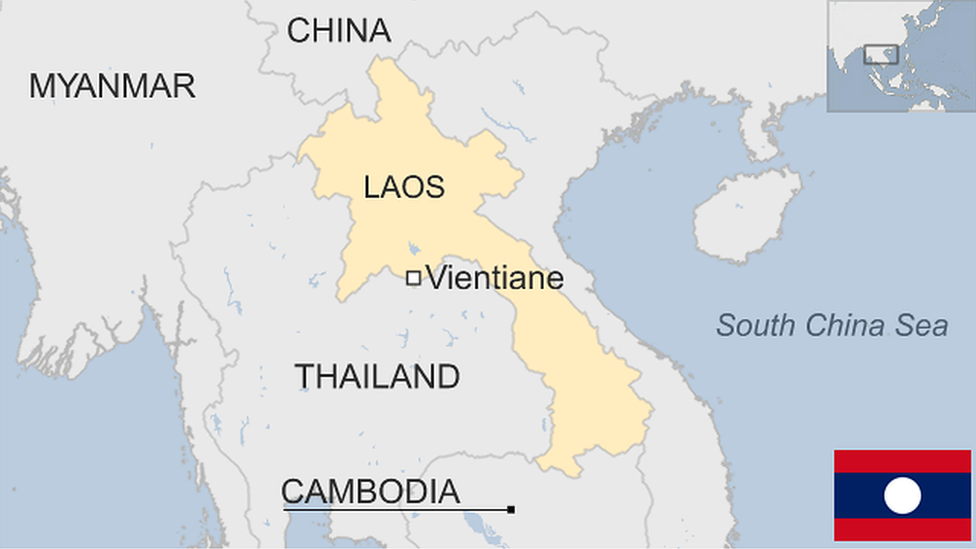Plain of Jars research finds ancient Laos burial rituals
- Published
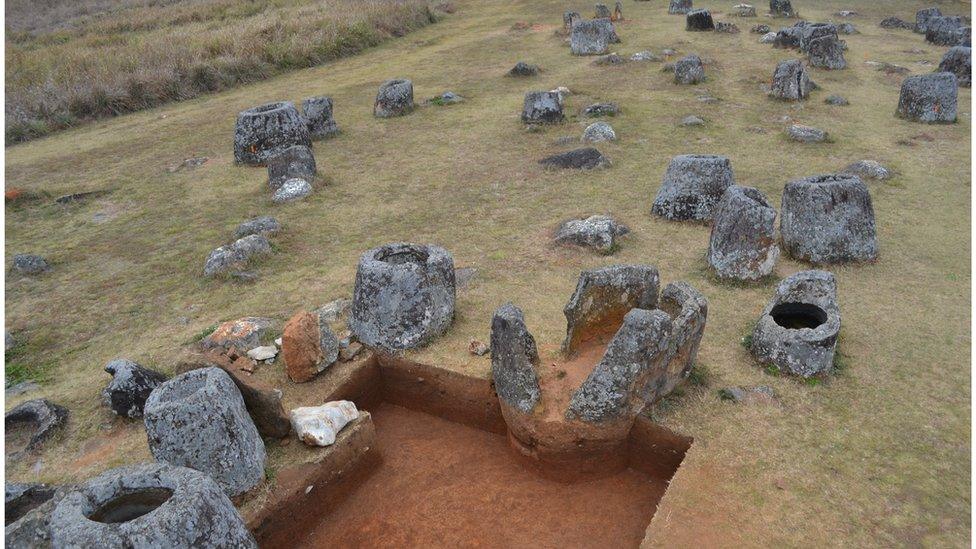
The "jars" are thousands of years old
Researchers in Laos have uncovered ancient human burial practices at the mysterious Plain of Jars.
It is hoped the discoveries may help unravel the purpose of the thousands of stone vessels scattered over hundreds of square kilometres in central Laos.
February's excavations were part of a five-year project by the Laos government and Australian scientists.
The researchers said it was the biggest attempt since the 1930s to understand who placed the jars and why.
The jars are believed to have been placed in Xieng Khouang province at least 2,000 years ago.
This is not the first time human remains have been found there.
But Dr Dougald O'Reilly from the Australian National University (ANU) school of archaeology told the BBC three different types of burials had now been discovered; bones placed in pits with a large limestone block on top, bones buried in ceramic vessels, and a single body in a grave.
"I don't think there is any doubt now that these jars were related to mortuary ritual," Mr O'Reilly said. "There is no evidence for habitation around the jars."

The Plain of Jars is one of Asia's most mysterious historic sites
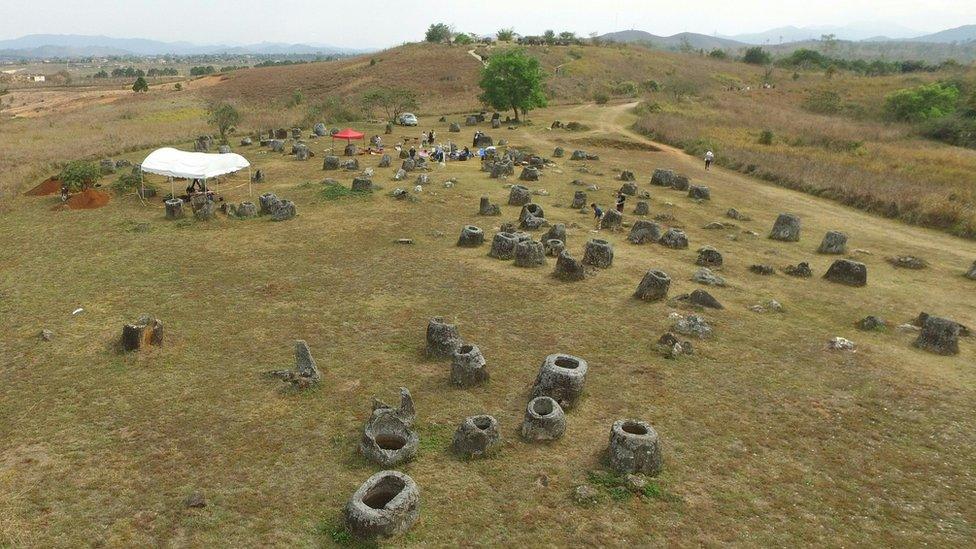
The jars are generally found in clusters
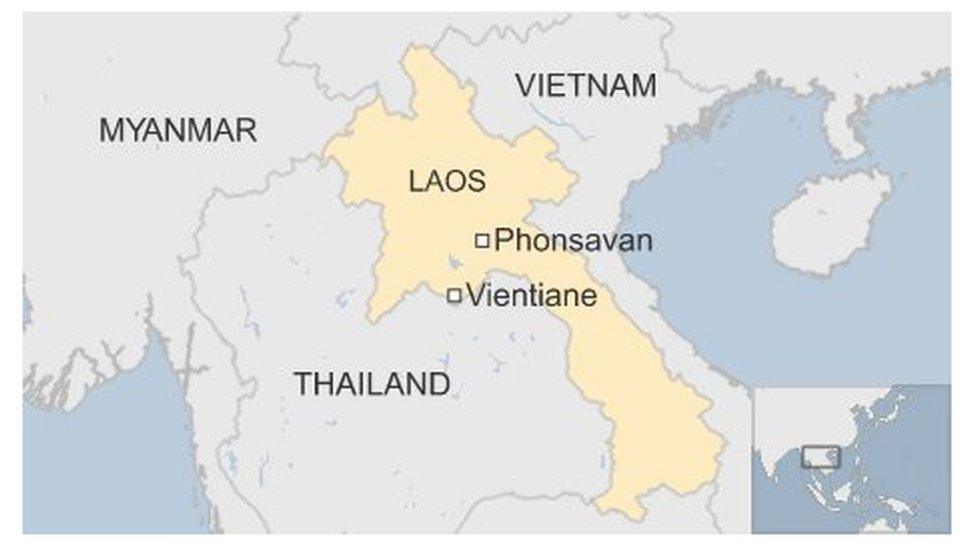
The jars are scattered over a wide area near Phonsavan
Mr O'Reilly said it was possible the jars were used to hold bodies until they had decomposed, so just the bones could be buried.
But he sounded a note of caution: "It's probably quite difficult to ascertain that... because they've been exposed for such a long time".
"We're at very early stages of research."
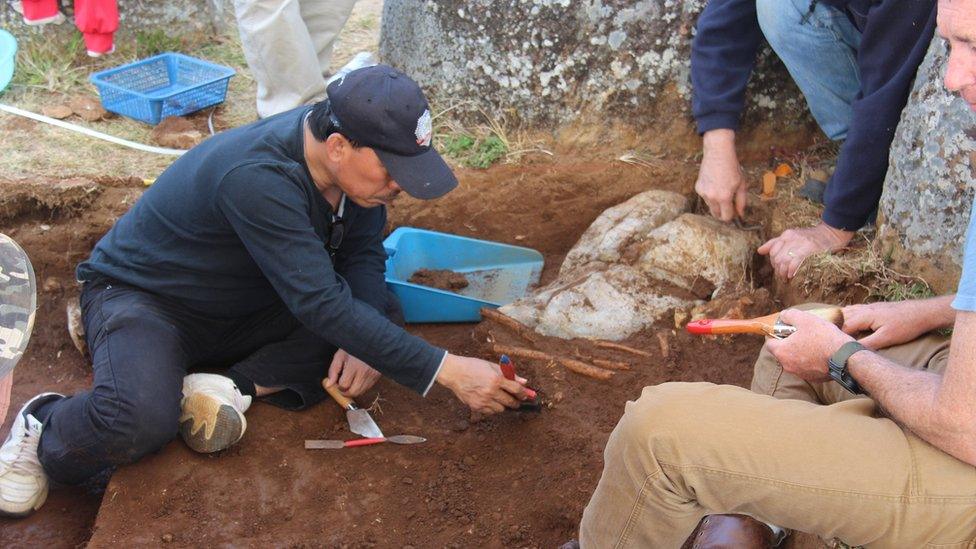
The project is a joint effort between Australian researchers and the Laos government
The researchers will be returning next year, to look at a forested, upland area of the Plain of Jars, which is not, in fact, a flat plain.
"My gut feeling is that we'll find very similar mortuary rituals," Dr O'Reilly said, "but it will be interesting to compare".
One reason why there have been so few major studies done of the Plain of Jars in recent decades is that there were so many unexploded bombs and mines, external in the area after the Vietnam War, Dr O'Reilly said.
The Plain was on the North Vietnamese supply route known as the Ho Chi Minh Trail and was bombed heavily by the US.
Digging, and even access to remote sites, was dangerous, although most of the unexploded ordnance has now been cleared.
Laos is hoping to have the Plain of Jars listed as a UNESCO World Heritage site, external.
- Published18 April 2023
